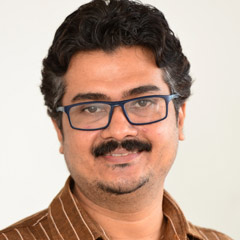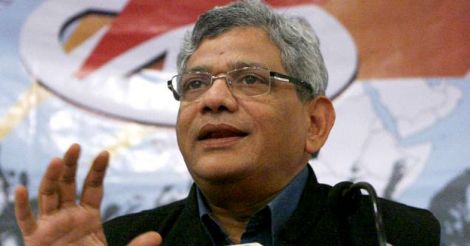A senior woman leader of the Congress in Manipur was a bit taken aback when Ramesh Chennithala, the chairman of the party’s screening committee in charge of picking candidates for the state assembly election, asked her about the Left’s chances in the north eastern state. When she said the Left did not seem to be contesting the polls, Chennithala corrected her by saying that the Left alliance was very much in the picture. Evidently, the Manipuri leader did not care as much about the Left as her colleague in Kerala.
Curiously, Manipur is the only place among the five poll-bound states where the Left has at least a little foothold. That representation comes from the CPI, not the CPM. The CPI had four MLAs in the Manipur assembly at a point. It won 14.05 percent of votes in the state in the Lok Sabha election in 2014.
Read also | BJP ready to accept UP polls as referendum on demonetization: Amit Shah
Elsewhere, the Left is a non-entity. The CPM won only 0.01 percent of votes in Uttar Pradesh in 2014, while It won 0.15 in Uttarkhand and 0.13 in Punjab.
The party has only 54 members in Goa. In Uttar Pradesh, its membership has slid from 6,180 in 2010 to 5,508 in 2015. The head count is 527 in Manipur and 1,310 in Uttarkhand.
The CPM, however, is not dejected by the numbers. The party is actively forming a Left alliance to fight in each of these states. Some of those formations are strange.
In Punjab, the CPM is allying with RMP(I), the party whose origin lies in the blood-stained dissidence in Onchiyam in Kerala. The party is led at the national level by Mangat Ram Pasla, the former CPM member who formed a rebel outfit called Punjab CPM before joining the RMP(I).
N. Venu, the state secretary of RMP(I) in Kerala, where it is fighting the CPM tooth and nail, is not very amused by the alliance in Punjab. “The CPM is a very small party there. Larger Left unity is a priority, but we are still opposed to working with them,” he said.
The Left alliance in the Uttar Prdesh includes the Revolutionary Socialist Party and the Forward Bloc (both Congress partners in Kerala) and the SUCI. Six Left parties are contesting in 140 seats. The CPM has made its stand clear in the remaining seats.
Party general secretary Sitaram Yechury tweeted that the party would work for the downfall of the BJP in the seats where the Left did not contest. He said the party’s primary responsibility in Uttar Pradesh and the whole of India was to oppose the BJP.
The Samajwadi Party-Congress combine is expected to benefit from the support.
Yechury knows very well that a verdict favorable to the BJP amid the headwinds created by the demonetization drive would create fissures in the Left and secular camps.
Prime minister Narendra Modi has also upped the ante by painting the CPM-led government in Kerala to a corner. The BJP leadership has warned of central intervention if the Pinarayi Vijayan government falters. That threat is backed by the blessings of the central leadership.
The CPM had released a document to prove that the CIA wanted a breakdown in law and order in Kerala to get the EMS Namboodiripad government dismissed in 1959. Modi may be eyeing the same route to squeeze out the Left from its last bastion.
The CPM has to take extra care to resist any attempts to isolate it. The party found itself on the wrong side when everyone from the UDF and the BJP to the CPI and even V.S. Achuthanandan joined hands against the alleged misdeeds of Law Academy management in Thiruvananthapuram.
Even K. M. Mani can be a spoiler here. The Kerala Congress strongman has not yet dismissed a potential understanding with the BJP.
The CPM is pinning its hopes on the other scenario. If Modi is forced to beat the retreat in the assembly polls to the five states, the RSS game plan to bolster the BJP may be in tatters.
Such a situation would be beneficial for the Congress. Rahul Gandhi may be encouraged to call for an organizational election and rise to the position of the party president.
The countdown to March 11 has already begun.

























 Sitaram Yechury
Sitaram Yechury